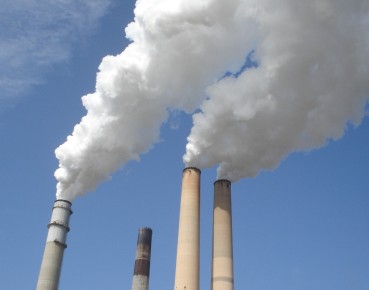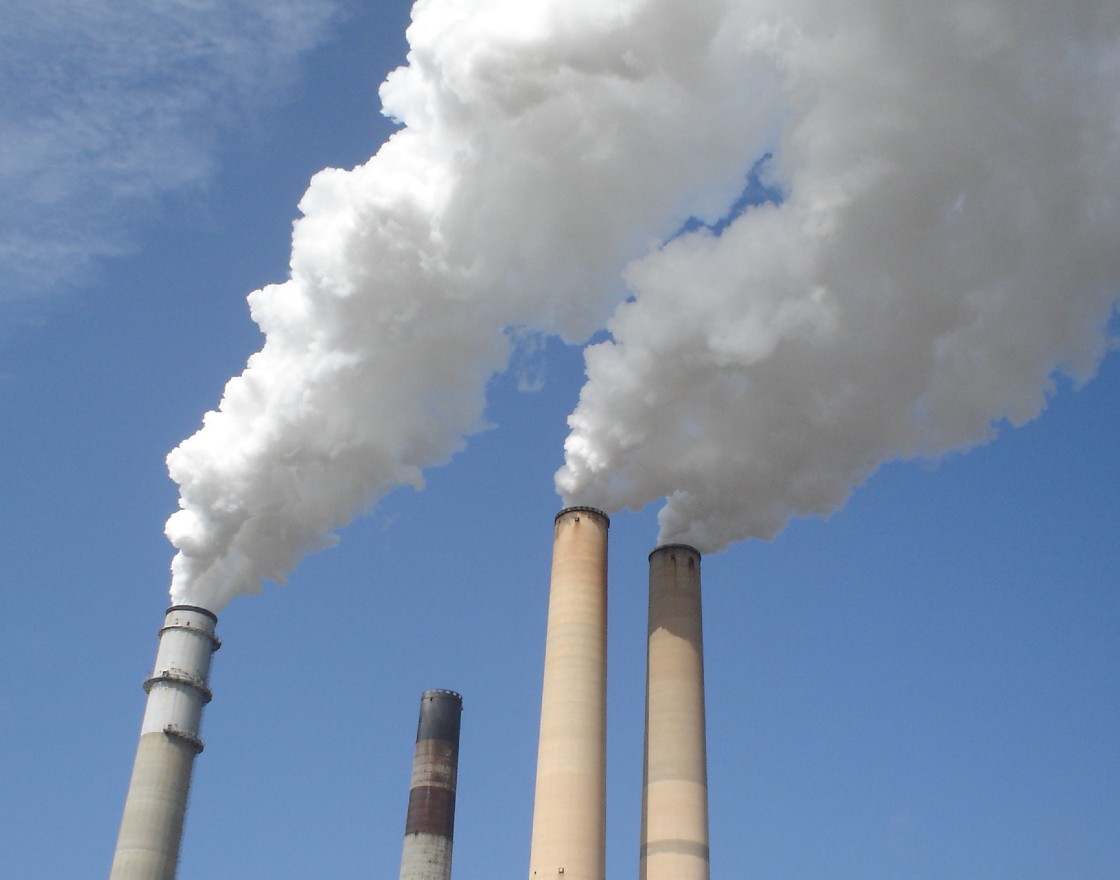
(Monkeyboy0076, Public domain)
When the COVID-19 epidemic broke out in China, industry was literally suspended. Many plants were forced to stop production all over the country, not only in Wuhan, China’s most important economic and transport hub, which until recently was under quarantine.
Sudden reduction of CO2 emissions
Cars have disappeared from the streets. The effect? According to the estimates of the Finnish Centre for Research on Energy and Clean Air (CREA), only in February, the consumption of coal and oil by Chinese plants fell by one third compared to the same period last year, resulting in approx. 200 million tons less carbon dioxide emissions. That is as much as the Netherlands or Ukraine emit throughout the year, or the United Kingdom over more than six months.
Due to reduced road traffic, emissions of nitrogen dioxide, among others, responsible for smog — also fell during this time by 30-50 per cent in the whole of China. A 70 per cent reduction in the number of internal flights has also contributed to the reduction in harmful emissions. Taking into account the fact that China is responsible for about 30 per cent of the world’s CO2 emissions per year, even the slightest decrease in this country is significant for the global warming process.
Marshall Burke, a scientist from Stanford University, estimated that the improvement in air quality in China could have saved the lives of 4,000 children under five and 73,000 adults over seventy. In his opinion, cleaner air saves more people than the coronavirus kills.
Slowly, the “beneficial” effects of the quarantine are also visible in other countries. As a result of the epidemic, aircrafts have been grounded and traffic on many international and domestic routes has been suspended.
The EU’s Copernicus Atmospheric Monitoring Service reported that there had been a sharp reduction in emissions as a result of the sharp decline in activity in northern Italy over the last 4-5 weeks. Transport, which is responsible for 21 per cent of the global CO2 emissions, has shrunk, so that cities that until now exceeded all air quality standards have met them.
First a decrease then an increase
Is there really anything to be happy about? There is no doubt that as soon as the pandemic can be stopped, the situation will return to the previous state. Past experience shows that it could even be worse. CO2 emissions have already fallen several times during the crises, as the Global Carbon Project organization shows. During the great crisis of 1929-1933, twice in the 1970s, after the oil shock caused by the embargo on oil supplies to Western countries following the Israeli-Arab War, after the collapse of the Soviet Union, when the socialist economy had made demand for its products realistic, and finally during the financial crisis in 2008 after the collapse of Lehman Brothers.
As Helen Mountford of the World Resources Institute points out, each of these events was followed by higher CO2 emissions than before, reaching record levels. Industry, aided by the government anti-crisis packages, moved into work at full speed to make up for the losses.
For example, during the last crisis, fossil fuel consumption and cement production fell by 1.4 per cent in 2009 to increase by 5.9 per cent in 2010. Beijing’s stimulus package significantly contributed to a 10 per cent increase in China’s CO2 emissions in 2009, with construction alone contributing 70 per cent.
Billions for stimulation
There’s no doubt that this time situation could be the same. Governments try to save their economies by applying special measures: interest rate cuts, aid programs for companies, or purchase of corporate bonds.
For example, Germany has announced an aid program for the economy at a level of EUR550bn, the UK at GBP350bn, France at EUR335bn and Spain at EUR200bn. The American Senate has approved the USD3 trillion package. The People’s Bank of China (PBOC) has launched, among others, a USD240bn bond purchase program to support liquidity in the financial sector and started lending money to banks at a reduced price. The Chinese government is working on a fiscal stimulus program. A huge amount of cash is to be released on the market for a new wave of infrastructure projects, such as road, hospital and metro line construction and support of exports.
Production, and consequently greenhouse gas emissions, will therefore immediately return to “normal”. The quarantine in Wuhan officially ended on March 19th and the whole country returned to work. The state-dominated plants have started up with full capacity, including steel production and coal consumption.
According to the scientific journal Nature Climate Change, before the outbreak of the pandemic, scientists predicted that global emissions in 2020 would remain at similar levels to those in 2019 or increase slightly. In the previous year, emissions from fossil fuel consumption increased by barely 0.6 per cent compared to 2018. When infrastructure spending in the aftermath of an epidemiological crisis surges, emission forecasts may also rise sharply.
A harder battle for the environment
Moreover, there is a risk that as a result of the crisis governments will be less inclined to “kill” weakened companies with further restrictions regarding environmental protection and prevention of climate change.
Until a month ago, the need to implement new requirements necessary to comply with the provisions of the Paris Agreement, or talks concerning the global carbon tax, were among the top topics of the most important economic conferences. Global corporations competed with each other in announcing sustainable development strategies and developing environmental technologies.
Some of them were motivated by the desire to reduce costs because of the rising costs of fuel and fossil fuel energy, investing in energy-efficient solutions or own renewable energy sources, was simply profitable. Under the circumstances of the recent sharp falls in oil prices — partly due to the conflict between Russia and Saudi Arabia and partly due to the economic slowdown following the pandemic — some will lose their motivation. And others, taking advantage of low prices, will simply increase consumption. This will obviously bring emissions back on track. And lower oil prices will hit the development of the electric car industry, already expensive and requiring sales stimulation.
Saving nature recedes into the background
Environmental investments will also slowdown in small and medium-sized enterprises (SME), which will be particularly hard hit by the economic downturn and will fight for their survival in the near future.
Moreover, the development of investment in renewable energy may also stop because of problems with the supply of equipment for its production. The temporary suspension of production in China, which is the largest producer of solar panels, wind turbines and lithium batteries for electric cars and energy storage facilities, as well as the disturbances in the maritime transport, have affected the stability of supplies to other countries and slowed down the development of renewable energy investments. Additionally, it is disturbed by the American-Chinese trade war.
When the economy is saved from the coronavirus, saving the planet recedes into the background. It also undermines projects such as the Green New Deal announced in February by the American Democrats, which refers to Franklin D. Roosevelt’s socio-economic reform package during the Great Depression of the 1930s. Combining the fight against global warming and the creation of millions of well-paid jobs can now easily be torpedoed by the Republicans and the industrial lobby.
Kevin Book, head of the analysis department at ClearView Energy Partners, a research company, estimates that replacing 83 per cent of the energy currently produced from non-renewable sources by RES alone — which currently means using photovoltaics, wind farms and biomass in the US — would cost USD2.9 trillion, i.e. almost the whole federal US tax revenue. As one can guess, rather it will be allocated for other infrastructure projects.
The shock doctrine can be changed
Naomi Klein, the author of the book “The Shock Doctrine: The Rise of Disaster Capitalism”, recalls that crises have so far acted against climate change or social inequalities. She defines “disaster capitalism” as the way in which private industry develops and gains profits from large-scale crises, taking advantage of a situation where governments have to succumb to industry’s expectations, which cannot be met under normal conditions.
In her conversation with the vice.com service, Naomi Klein claims that the crisis associated with the coronavirus epidemic does not differ from previous global crises in this respect. And its main victims will be the environment and the poorest members of the market. At the time of crises, demands for bailouts, including buyouts, of the so-called key sectors of the economy and institutions, such as banks, airlines, mining plants, etc., come to the fore.
Does this mean that environmental protection will be defeated in the fight against the coronavirus? Not necessarily, but it would require conscious strategies when developing emergency aid programs. Especially if, as David Livingston, the analyst from Eurasia Group, predicts that the major players in the upstream sector recognize the decline in oil prices as a long-term trend and the market will better evaluate investment in renewable energy.
Countries implementing business rescue programs would then link them to climate change adaptation and the transition to clean energy sources. For example, by offering more favorable support conditions to those whose investments will reduce emissions and, more generally, protect the environment. This is already demanded by American Democrat senators, who have announced their position that any aid programs for airlines must be linked to conditions for reducing their CO2 emissions. The American aviation industry will get USD25bn from the government in the form of grants, loans and tax credits.
Despite the outbreak of the epidemic, the European Union announced the long-awaited report of the Technical Expert Group on the European taxonomy for sustainable development. The report announces the struggle against greenwashing (i.e. simulated pro-environmental investments) and shows possible ways of financing environmentally friendly investments. Instead, the EU will probably not decide to introduce the so-called border carbon tax (for goods imported from countries where no emission combating strategy applies) fearing that this will be an excellent excuse for the US to introduce duties on European products.
A faster way to create pro-climate incentives could be the aid package worth EUR750bn that the European Central Bank has just theoretically launched. The special lending program for SME announced by the ECB in connection with the coronavirus pandemic could be at least partly linked to the support for those companies that implement or have implemented pro-climate solutions.
This is the hope of, among others, Helen Mountford of the World Resources Institute, who believes that this is, “the last moment to give priority to low-carbon infrastructure projects in order to prevent a sharp rise in emissions once the crisis is over.” Lauri Myllyvirta, CREA chief analyst, claims that a repetition of the old models of post-crisis stimulation of economies will inevitably lead to increased emissions over the coming years, unless investment in renewable energy sources and other green projects is still relevant for governments.


